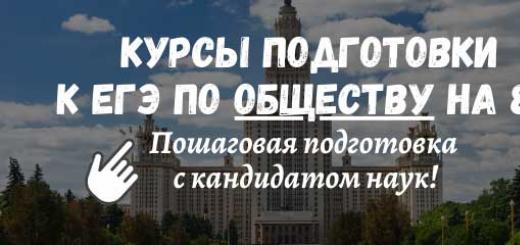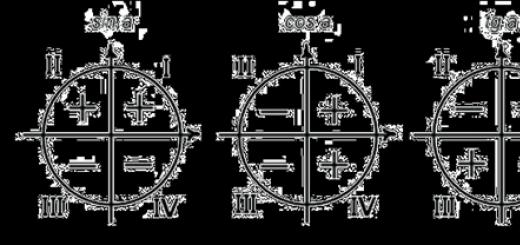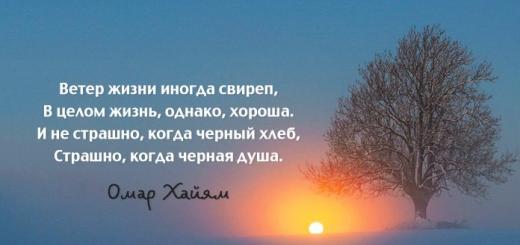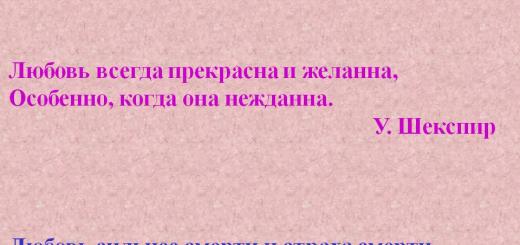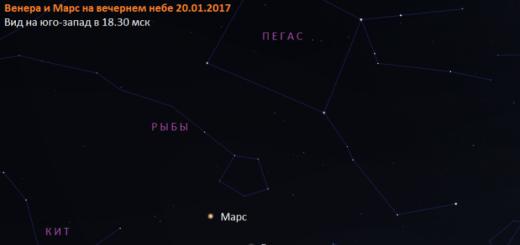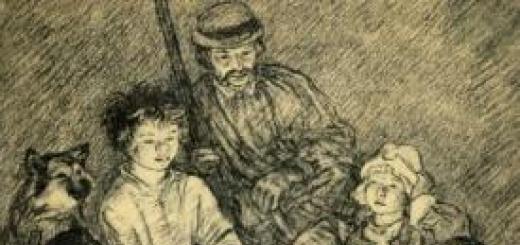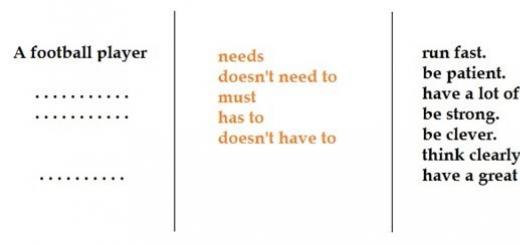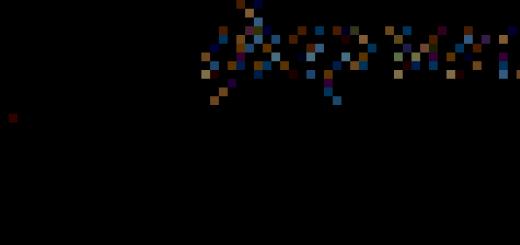A selection of color photographs of the Second World War, mainly from the Eastern Front
German staff officers in the field near the Fieseler Fi 156 Storch aircraft
Hungarian soldiers are interrogating a Soviet prisoner of war. The man in the cap and black jacket is presumably a policeman. On the left is a Wehrmacht officer

A column of German infantry moves down a street in Rotterdam during the Invasion of Holland

Luftwaffe air defense personnel work with a Kommandogerät 36 (Kdo. Gr. 36) stereoscopic rangefinder. The rangefinder was used to control the fire of anti-aircraft batteries equipped with Flak 18 series guns.



German assault gun StuG III Ausf. G, belonging to the 210th Assault Gun Brigade (StuG-Brig. 210), moves past the positions of the 1st Marine Infantry Division (1. Marine-Infanterie-Division) in the Ceden area (currently the Polish town of Cedynia).

German tank crews repairing the engine of a Pz tank. Kpfw. IV with a short-barreled 75 mm gun.

German tank Pz. Kpfw. IV Ausf. H of the training tank division (Panzer-Lehr-Division), knocked out in Normandy. In front of the tank is a unitary high-explosive fragmentation round Sprgr.34 (weight 8.71 kg, explosive - ammotol) for the 75-mm KwK.40 L/48 cannon. The second shell lies on the body of the vehicle, in front of the turret.

A column of German infantry on the march Eastern Front. In the foreground, a soldier carries a 7.92 MG-34 machine gun on his shoulder.

Luftwaffe officers against the background of a car in Nikolsky Lane in occupied Smolensk.

Employees of Todt's organization dismantle reinforced concrete French defensive structures in the Paris area. France 1940

A girl from a village in the Belgorod region sits with a balalaika on the trunk of a fallen tree.

German soldiers rest near the Einheits-Diesel army truck.

Adolf Hitler with German generals inspects the fortifications of the West Wall (also called the Siegfried Line). Commander with map in hand border troops Upper Rhine Infantry General Alfred Wäger (1883–1956), third from right is Chief of Staff of the Wehrmacht High Command, Colonel General Wilhelm Keitel (1882–1946). Second from right is Reichsführer SS Heinrich Himmler (Heinrich Himmler, 1900-1945). A cameraman stands on the parapet in a raincoat.

Church of the Transfiguration in occupied Vyazma.

Pilots of the 53rd Luftwaffe Fighter Squadron (JG53) at an airfield in France. In the background are Messerschmitt Bf.109E fighters.

Artillery officers of the Wehrmacht Afrika Korps, photographed by the corps commander, Lieutenant General Erwin Rommel (Erwin Eugen Johannes Rommel).

Crew of a Swedish-made 40-mm Bofors automatic anti-aircraft gun on the cover of the Finnish Suulajarvi airfield.

Vehicles of the Hungarian army on Vorovskogo Street in occupied Belgorod. The Polish-Lithuanian Church is visible on the right.

The commander of the 6th German Army, Field Marshal General Walter von Reichenau (October 8, 1884–January 17, 1942) stands near his headquarters car. Behind him stands the commander of the 297th Infantry Division, Artillery General Max Pfeffer (06/12/1883–12/31/1955).
There is a version according to which, according to the Wehrmacht General Staff officer Paul Jordan, when in the first months of the war, during the offensive, the 6th Army encountered T-34 tanks, after personally examining one of the tanks, von Reichenau told his officers : “If the Russians continue to produce these tanks, we will not win the war.”

Finnish soldiers set up camp in the forest before their group leaves. Petsamo region

A salvo of bow 406-mm main caliber guns of the American battleship Missouri (BB-63) during firing training in the Atlantic.

Pilot of the 9th Squadron of the 54th Fighter Squadron (9. JG54) Wilhelm Schilling in the cockpit of a Messerschmitt Bf.109G-2 fighter at the Krasnogvardeysk airfield.

Adolf Hitler with guests at a table in his home in Obersalzberg. Pictured from left to right: Professor Morrel, wife of Gauleiter Forster and Hitler.

A group portrait of policemen against the backdrop of a temple in an occupied Soviet village.

A Hungarian soldier near the captured Soviet heavy artillery tractor “Voroshilovets”.

A dismantled Soviet Il-2 attack aircraft in occupied Ostrogozhsk, Voronezh region


Soviet prisoners of war repair the cobblestone street before a parade of Finnish troops in the center of captured Vyborg.

Two German soldiers with a single 7.92 mm MG-34 machine gun mounted on a Lafette 34 machine gun in a position in the Mediterranean

Gun crews with their 88-mm FlaK 36 anti-aircraft guns on the German artillery support ferry "Siebel" while sailing in Lahdenpohja.

A German soldier digging a trench in the Belgorod region

Battered and burned german tank Pz. Kpfw. V "Panther" in an Italian village south of Rome

The commander of the 6th Motorized Infantry Brigade (Schützen-Brigade 6), Major General Erhard Raus (1889 - 1956), with his staff officers.

A lieutenant and a chief lieutenant of the Wehrmacht confer in the steppe on the southern sector of the Eastern Front.

German soldiers wash off winter camouflage from a half-track armored personnel carrier Sd. Kfz. 251/1 Ausf. C "Hanomag" near a hut in Ukraine.

Luftwaffe officers walk past cars in Nikolsky Lane in occupied Smolensk. The Assumption Cathedral rises in the background.

A German motorcyclist poses with Bulgarian children from an occupied village.

MG-34 machine gun and Mauser rifle on German positions near an occupied Soviet village in the Belgorod region (at the time of filming, Kursk region).
A German tank Pz. knocked out in the valley of the Volturno River. Kpfw. V "Panther" with tail number "202"

Graves of German military personnel in Ukraine.

German cars near the Trinity Cathedral (Cathedral of the Life-Giving Trinity) in occupied Vyazma.

Column of captured Red Army soldiers in a destroyed locality in the Belgorod area.
A German field kitchen is visible in the background. Next is the StuG III self-propelled gun and the Horch 901 vehicle.

Colonel General Heinz Guderian (Heinz Guderian, 1888 - 1954) and SS Hauptsturmührer Michael Wittmann

Italian dictator Benito Mussolini and Field Marshal Wilhelm Keitel at Feltre airfield.

German road signs at the intersection of K. Marx and Medvedovsky (now Lenin) streets in occupied Ostrogozhsk, Voronezh region

A Wehrmacht soldier near road signs in occupied Smolensk. The domes of the Assumption Cathedral are visible behind the destroyed building.
The inscriptions on the sign on the right side of the photo: Most (to the right) and Dorogobuzh (to the left).

A German sentry and a soldier (probably the driver) near the headquarters car Mercedes-Benz 770 near the Market Square in occupied Smolensk.
In the background is a view of Cathedral Mountain with the Assumption Cathedral.

A Hungarian soldier wounded on the Eastern Front rests after being bandaged.

Soviet partisan executed by the Hungarian occupiers in Stary Oskol. During the war, Stary Oskol was part of Kursk region, currently - part of the Belgorod region.

A group of Soviet prisoners of war sit on logs during a break during forced labor on the Eastern Front

Portrait of a Soviet prisoner of war in a shabby overcoat

Soviet captured soldiers at a collection point on the Eastern Front.

Soviet soldiers with their hands raised surrender in a wheat field.

German soldiers in Königsberg next to an MG 151/20 aircraft cannon in the infantry version

The historical center destroyed by bombing German city Nuremberg


A Finnish soldier armed with a Suomi submachine gun in the battle for the village of Povenets.

Wehrmacht mountain rangers against the background of a hunting house.

Luftwaffe sergeant near the airfield. Presumably an anti-aircraft gunner.

Jet fighter Messerschmitt Me-262A-1a from the 3rd group of the 2nd combat training squadron of the Luftwaffe (III/EJG 2).

Finnish soldiers and German rangers sail on boats along the Lutto River (Lotta, Lutto-joki) in the Petsamo region (currently Pechenga, since 1944 part of the Murmansk region).

German soldiers tune into the Torn radio station. Fu.d2 is a backpack VHF infantry radio manufactured by Telefunken.

Re fighter crash site. 2000 Heja of pilot István Horthy (István Horthy, 1904-1942, eldest son of the regent of Hungary Miklos Horthy) from the 1/1 fighter squadron of the Hungarian Air Force. After takeoff, the plane lost control and crashed near the airfield near the village of Alekseevka, Kursk region (now Belgorod region). The pilot died.

Citizens at the Blagoveshchensky market in Kharkov, occupied by German troops. In the foreground are artisan shoemakers repairing shoes.

Finnish troops on parade at the monument to Swedish Marshal Thorgils Knutsson in captured Vyborg

Three marines of the 1st Kriegsmarine Division (1. marine-infanterie-division) in a trench on a bridgehead in the Ceden area (currently the Polish town of Cedynia).

German pilots look at peasant oxen at one of the airfields in Bulgaria. A Junkers Ju-87 dive bomber is visible behind. On the right is a Bulgarian ground forces officer.

Equipment of the 6th German Panzer Division in East Prussia before the invasion of the USSR. In the center of the photo is a Pz tank. Kpfw. IV Ausf. D. An Adler 3 Gd car is visible in the background. In the foreground, parallel to the tank, stands a Horch 901 Typ 40.

A Wehrmacht officer gives the command to attack with his whistle.

German officer on the street of occupied Poltava

German soldiers during street fighting. The Pzkpfw (Panzer-Kampfwagen) III medium tank on the right was initially armed with 37s,
and then a 50 mm 1/42 gun.
However, their shots were unable to penetrate the inclined armor protection of the Soviet T-34, as a result of which
the designers re-equipped the vehicle with a 50-mm KwK 39 L/60 gun (60 calibers versus 42) with more long barrel, which made it possible to increase the initial speed of the projectile.

A German staff car with a French flag on the hood, abandoned on the coast of France.

The photographs were taken on May 8, 1945 during the retreat of the 6th Wehrmacht Infantry Division in the Neustadt area at Tafelfichte in the Ore Mountains (Bohemia, modern Nové Město pod Smrkem, Czechoslovakia) and the Giant Mountains (Riesengebirge, Silesia, Czechoslovakia).
Photos were taken German soldier, who still had Agfa color film in his camera. Retreating soldiers at a halt. The emblem of the 6th Infantry Division is visible on the cart.

Adolf Hitler and German officers walking dogs at Rastenburg headquarters. Winter 1942-1943.

German dive bombers Junkers Ju-87 (Ju.87B-1) in flight over the English Channel.

Soviet captured soldiers butcher a horse for meat in a village in the Kursk region.

Adolf Hitler takes the parade German troops in Warsaw in honor of the victory over Poland. Present on the podium are Hitler, Colonel General Walter von Brauchitsch, Lieutenant General Friedrich von Kochenhausen, Colonel General Gerd von Rundstedt, Colonel General Wilhelm Keitel, General Johannes Blaskowitz and General Albert Kesselring and others. German Horch-830R Kfz.16/1 vehicles are passing in the foreground.

German soldiers near a damaged Soviet T-34 tank in the village of Verkhne-Kumsky

A Luftwaffe Oberfeldwebel gives a coin to a gypsy girl on the island of Crete.

A German soldier inspects a Polish PZL.23 Karas bomber at Okęcie airfield

A destroyed bridge over the Seim River in Lgov, Kursk region. The Church of St. Nicholas the Wonderworker is visible in the background.

Parts tank brigade"Koll" (Panzer Brigade Koll) enter a Soviet village near Vyazma. The column consists of Pz.35(t) tanks.

German soldiers are sorting letters - looking for items addressed to them.

German soldiers at their dugout listen to their comrade play the accordion during a lull during the fighting in the Belgorod region

German dive bombers Junkers Ju-87 (Ju.87D) from the 7th squadron of the 1st dive bomber squadron (7. StG1) before taking off on the Eastern Front.

A column of German vehicles from the Panzer Brigade Koll tank brigade is moving along the road near Vyazma. In the foreground is the Pz command tank. BefWg. III brigade commander Colonel Richard Koll. Phänomen Granit 25H ambulances are visible behind the tank. Along the side of the road, a group of Soviet prisoners of war is walking towards the column.

A mechanized column of the 7th German Tank Division (7. Panzer-Division) drives past a Soviet truck burning on the side of the road. In the foreground is a Pz.38(t) tank. Three Soviet prisoners of war are walking towards the column. Vyazma area.

German artillerymen fire from a 210-mm heavy field howitzer Mrs.18 (21 cm Mörser 18) at the positions of Soviet troops.

Oil leakage from the engine of the German fighter Messerschmitt Bf.110C-5 from the 7th squadron of the 2nd training squadron (7.(F)/LG 2). The photo was taken at a Greek airfield after the return of 7.(F)/LG 2 from a flight to cover the landing on Crete.

Field Marshal Erich von Manstein, Commander of Army Group South, and General tank troops Hermann Breith, commander of the 3rd Panzer Corps at a meeting at the map of military operations before Operation Citadel.

Damaged soviet tanks in a field near Stalingrad. Aerial photography from a German plane.

Polish prisoners of war captured during the Polish Wehrmacht campaign.

German soldiers at a collection point, captured by the Allies during the Italian campaign.

German command tank Pz. BefWg. III from the Panzer Brigade Koll tank brigade in a village near Vyazma. In the tank's turret hatch is the brigade commander, Colonel Richard Koll.

Second world war... People tend to forget history... Less and less are remembered about the terrible events that haunted the whole world throughout the Second World War. And many representatives of the younger generation do not know facts, dates and figures at all! This is extremely sad, because you need to know history so as not to repeat its mistakes.
We present to your attention 11 terrible images from the Second World War that everyone needs to see in order to realize the horror of wars and remember that the good war is the one that never happened!
1 Raft from Armidale
On the first day of winter in 1942, Japanese fighters attacked the Australian patrol ship Armidale. Most of those people who were on the ship died immediately, but some survivors managed to make a raft from the remains of the ship. The raft accommodated about 20 people. A patrol seaplane spotted the raft on December 8, taking this photo, but rescuers were unable to splash down due to high waves. Unfortunately, neither the next day nor ever again the raft could be found...
2 Punishment for General Dostler

On December 1, 1945, German infantry general Anton Dostler was executed. He led the destruction of an American sabotage group, for which he received a death sentence, the execution of which was carefully filmed on photo and film.
In November 1942, in the forests of Eastern Karelia, a Finnish officer shoots Soviet intelligence officer, who, despite the proximity of death, smiles into the camera. The photo was only made public in 2006.

70 years ago, on September 2, 1945, World War II ended. The largest armed conflict in human history involved 62 states out of 73 that existed at that time (80% of the world's population). Fighting were conducted on the territory of three continents and in the waters of four oceans. This is the only conflict in which nuclear weapons were used. On September 2, 1945, Japan signed the Act of unconditional surrender" Japan. This photo collection contains unique footage from the end of the war.
A nuclear mushroom in the sky over Hiroshima an hour after the explosion of an atomic bomb dropped by the American B-29 Enola Gay bomber. About 80,000 people died immediately, and another 60,000 died from injuries and exposure by 1950. (AP Photo/U.S. Army via Hiroshima Peace Memorial Museum)
 A North American B-25 Mitchell bomber raids a Japanese destroyer off the coast of Taiwan in April 1945. (USAF)
A North American B-25 Mitchell bomber raids a Japanese destroyer off the coast of Taiwan in April 1945. (USAF)
 Soldiers of the US Army's 25th Division advance along the edge of Balete Pass in northern Luzon, Philippines, April 12, 1945. They pass the body of a dead Japanese soldier, which lies on a tree fallen by the bombing. (AP Photo/U.S. Signal Corps)
Soldiers of the US Army's 25th Division advance along the edge of Balete Pass in northern Luzon, Philippines, April 12, 1945. They pass the body of a dead Japanese soldier, which lies on a tree fallen by the bombing. (AP Photo/U.S. Signal Corps)
 Anti-aircraft gunners (center foreground) shoot at a burning Japanese kamikaze aircraft as it crashes onto the flight deck of the US Navy escort carrier Sangamon during combat operations in the Ryukyu Islands off Japan, May 4, 1945. This plane crashed into the sea near an aircraft carrier. Another Japanese plane managed to crash into the deck of the ship and cause significant damage. (AP Photo/U.S. Navy)
Anti-aircraft gunners (center foreground) shoot at a burning Japanese kamikaze aircraft as it crashes onto the flight deck of the US Navy escort carrier Sangamon during combat operations in the Ryukyu Islands off Japan, May 4, 1945. This plane crashed into the sea near an aircraft carrier. Another Japanese plane managed to crash into the deck of the ship and cause significant damage. (AP Photo/U.S. Navy)
 The first of twenty Japanese men emerges from a cave on Iwo Jima with their hands raised, April 5, 1945. A group of soldiers hid there for several days. (AP Photo/U.S. Army Signal Corps)
The first of twenty Japanese men emerges from a cave on Iwo Jima with their hands raised, April 5, 1945. A group of soldiers hid there for several days. (AP Photo/U.S. Army Signal Corps)
 Fire on the deck of the aircraft carrier USS Bunker Hill after two kamikaze attacks occurred within 30 seconds of each other, off the coast of Kyushu, May 11, 1945. 346 crew members were killed and 264 were injured. (U.S. Navy)
Fire on the deck of the aircraft carrier USS Bunker Hill after two kamikaze attacks occurred within 30 seconds of each other, off the coast of Kyushu, May 11, 1945. 346 crew members were killed and 264 were injured. (U.S. Navy)
 A Marine surveys the destruction following the American bombing of the city of Naha on the island of Okinawa, Japan, June 13, 1945. The frames of the buildings are all that remains of the city with a population of 443 thousand people. (AP Photo/U.S. Marine Corps, Corp. Arthur F. Hager Jr.)
A Marine surveys the destruction following the American bombing of the city of Naha on the island of Okinawa, Japan, June 13, 1945. The frames of the buildings are all that remains of the city with a population of 443 thousand people. (AP Photo/U.S. Marine Corps, Corp. Arthur F. Hager Jr.)
 A formation of B-29 Superfortress bombers of the 73rd Bombardment Wing flies over Mount Fuji, Japan, 1945. (USAF)
A formation of B-29 Superfortress bombers of the 73rd Bombardment Wing flies over Mount Fuji, Japan, 1945. (USAF)
 View of Tokyo after the bombing in 1945. The surviving residential buildings are surrounded by the ruins and ashes of neighboring buildings that were burned to the ground by incendiary bombs. (USAF)
View of Tokyo after the bombing in 1945. The surviving residential buildings are surrounded by the ruins and ashes of neighboring buildings that were burned to the ground by incendiary bombs. (USAF)
 Fireball and shock wave 0.025 seconds after detonation during the Trinity test in the New Mexico desert, July 16, 1945. (U.S. Department of Defense)
Fireball and shock wave 0.025 seconds after detonation during the Trinity test in the New Mexico desert, July 16, 1945. (U.S. Department of Defense)
 First atomic bomb"Baby" ready to be loaded into the bomb bay of the Enola Gay, August 1945. (NARA)
First atomic bomb"Baby" ready to be loaded into the bomb bay of the Enola Gay, August 1945. (NARA)
 The heat released during nuclear explosion over Hiroshima, the roadway on the bridge over the Ota River was scorched, approximately 800 meters from the epicenter of the explosion. Sections of the road obscured by concrete pillars and railings remained undamaged. (NARA)
The heat released during nuclear explosion over Hiroshima, the roadway on the bridge over the Ota River was scorched, approximately 800 meters from the epicenter of the explosion. Sections of the road obscured by concrete pillars and railings remained undamaged. (NARA)
 Military medics treat Japanese survivors of the atomic bombing of Hiroshima, August 6, 1945. (AP Photo)
Military medics treat Japanese survivors of the atomic bombing of Hiroshima, August 6, 1945. (AP Photo)
 Just days after the bombing of Hiroshima, the United States began preparations for the detonation of a second nuclear bomb. Photo: Fat Man bomb being loaded onto a trailer, August 1945. After the bombing of Hiroshima, Japan still refused to capitulate, and US President Truman issued a statement in which he said: “If they do not accept our terms, they should expect an avalanche of destruction from the air such as they have never seen on the ground.” (NARA)
Just days after the bombing of Hiroshima, the United States began preparations for the detonation of a second nuclear bomb. Photo: Fat Man bomb being loaded onto a trailer, August 1945. After the bombing of Hiroshima, Japan still refused to capitulate, and US President Truman issued a statement in which he said: “If they do not accept our terms, they should expect an avalanche of destruction from the air such as they have never seen on the ground.” (NARA)
 In this photo taken shortly after the atomic bombing, workers clear debris from a devastated area of Nagasaki, Japan, on August 9, 1945. This document, obtained by the US Army from the archives of the official Japanese news agency Domei, was the first photograph of the destruction in Nagasaki taken on the ground. (AP Photo)
In this photo taken shortly after the atomic bombing, workers clear debris from a devastated area of Nagasaki, Japan, on August 9, 1945. This document, obtained by the US Army from the archives of the official Japanese news agency Domei, was the first photograph of the destruction in Nagasaki taken on the ground. (AP Photo)
 People walk among the charred ruins of the city of Nagasaki shortly after the atomic bombing destroyed much of the city. The temperature at the epicenter of the explosion reached 3900 C. (USAF)
People walk among the charred ruins of the city of Nagasaki shortly after the atomic bombing destroyed much of the city. The temperature at the epicenter of the explosion reached 3900 C. (USAF)
 On August 9, 1945, the USSR launched an invasion of Manchuria. More than one million Soviet soldiers went on the offensive against the Japanese Kwantung Army. Soviet army quickly defeated poorly trained Japanese troops. In the photo: a column of tanks moves through the streets of the Chinese city of Dalian. (Waralbum.ru)
On August 9, 1945, the USSR launched an invasion of Manchuria. More than one million Soviet soldiers went on the offensive against the Japanese Kwantung Army. Soviet army quickly defeated poorly trained Japanese troops. In the photo: a column of tanks moves through the streets of the Chinese city of Dalian. (Waralbum.ru)
 Soviet soldiers stand on the banks of the Songhua River in Harbin. The occupied city was liberated Soviet troops August 20, 1945. Some 700,000 Soviet troops occupied Manchuria by the time Japan surrendered. (Yevgeny Khaldei/waralbum.ru)
Soviet soldiers stand on the banks of the Songhua River in Harbin. The occupied city was liberated Soviet troops August 20, 1945. Some 700,000 Soviet troops occupied Manchuria by the time Japan surrendered. (Yevgeny Khaldei/waralbum.ru)



